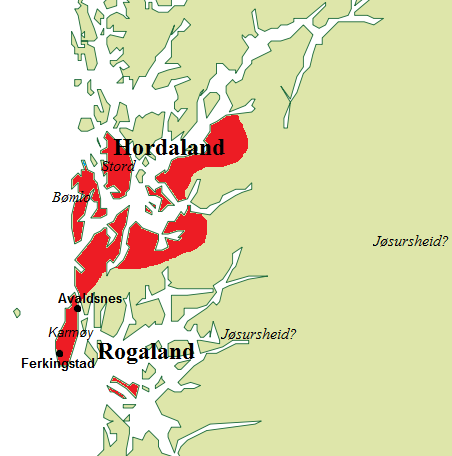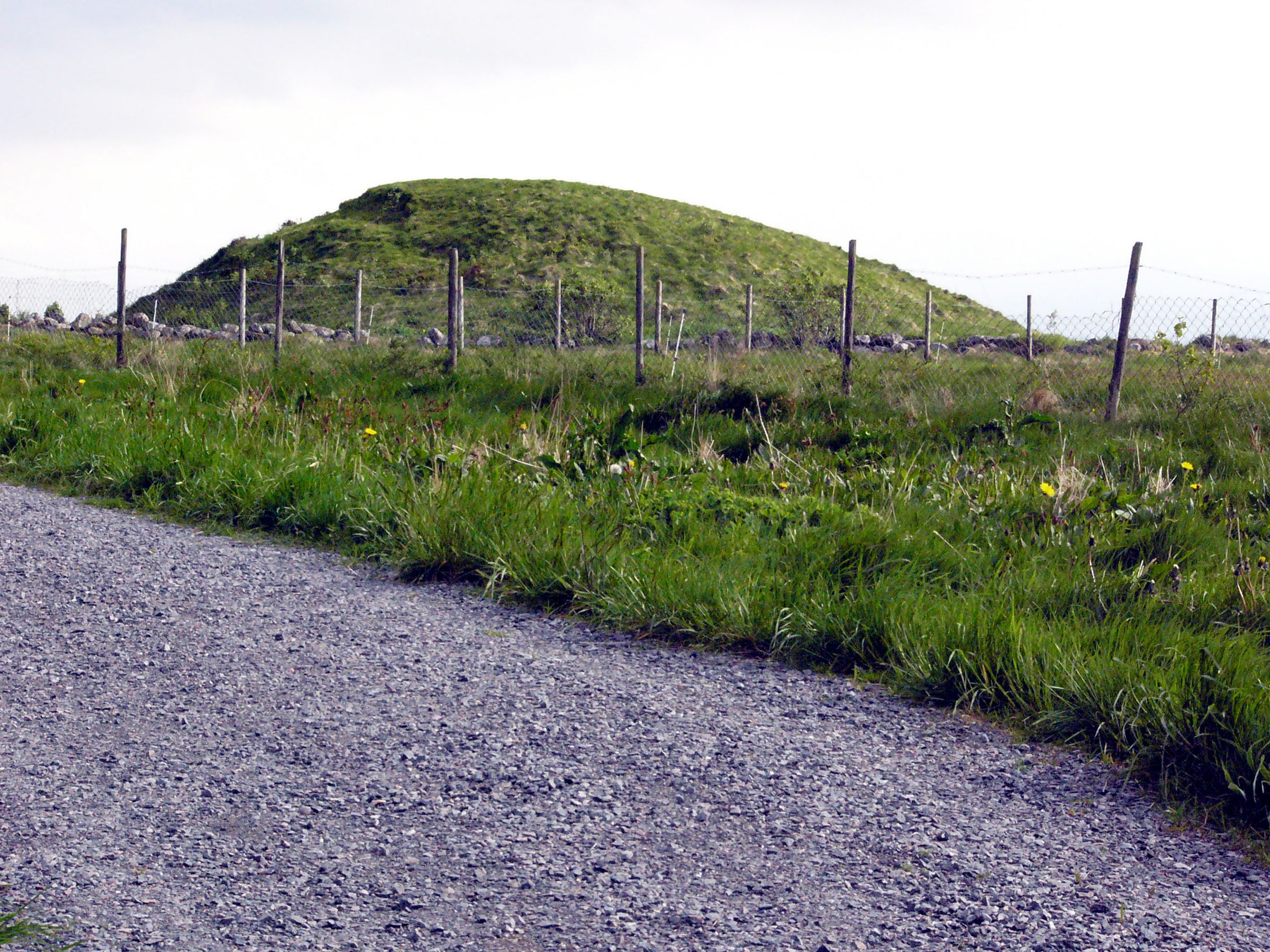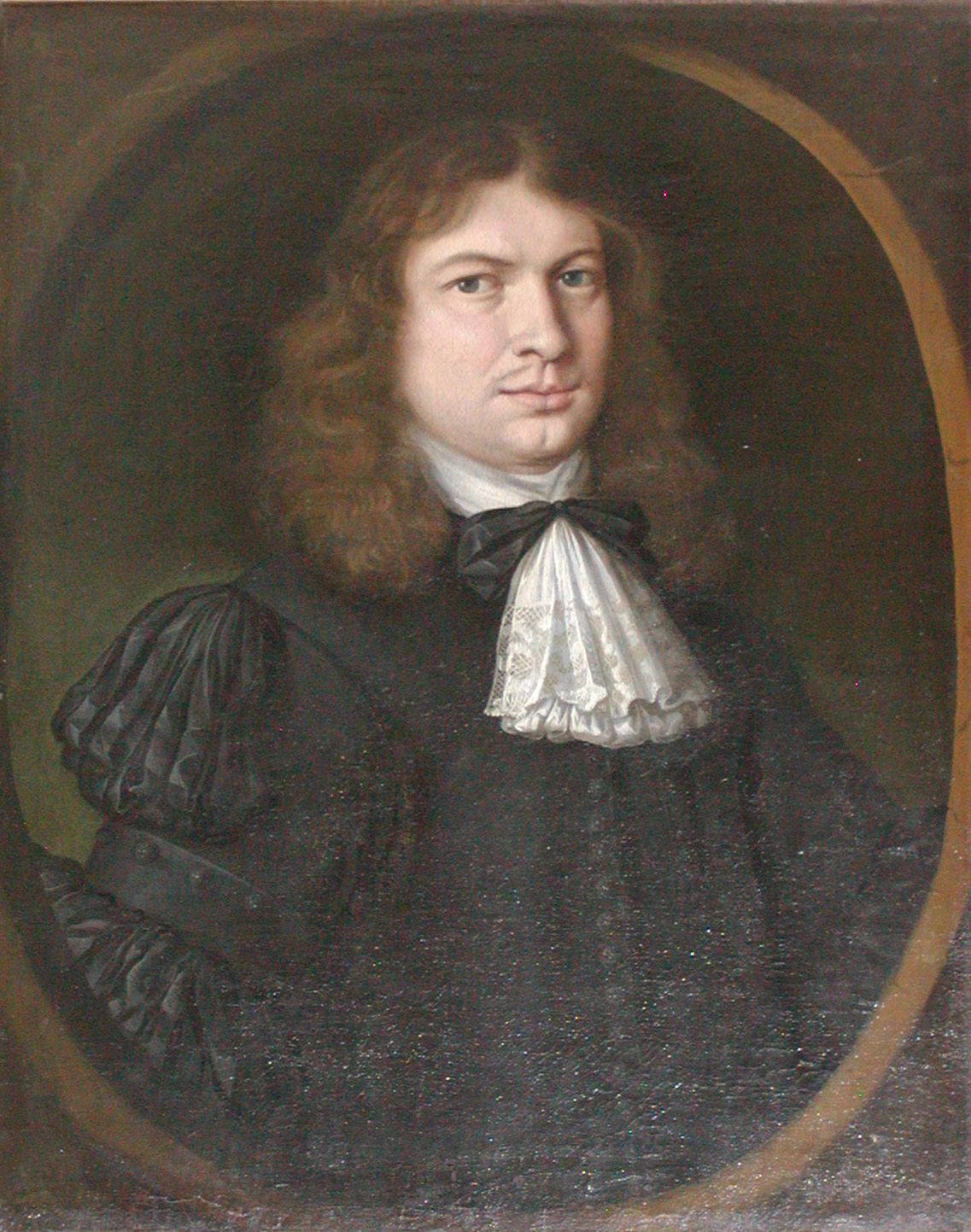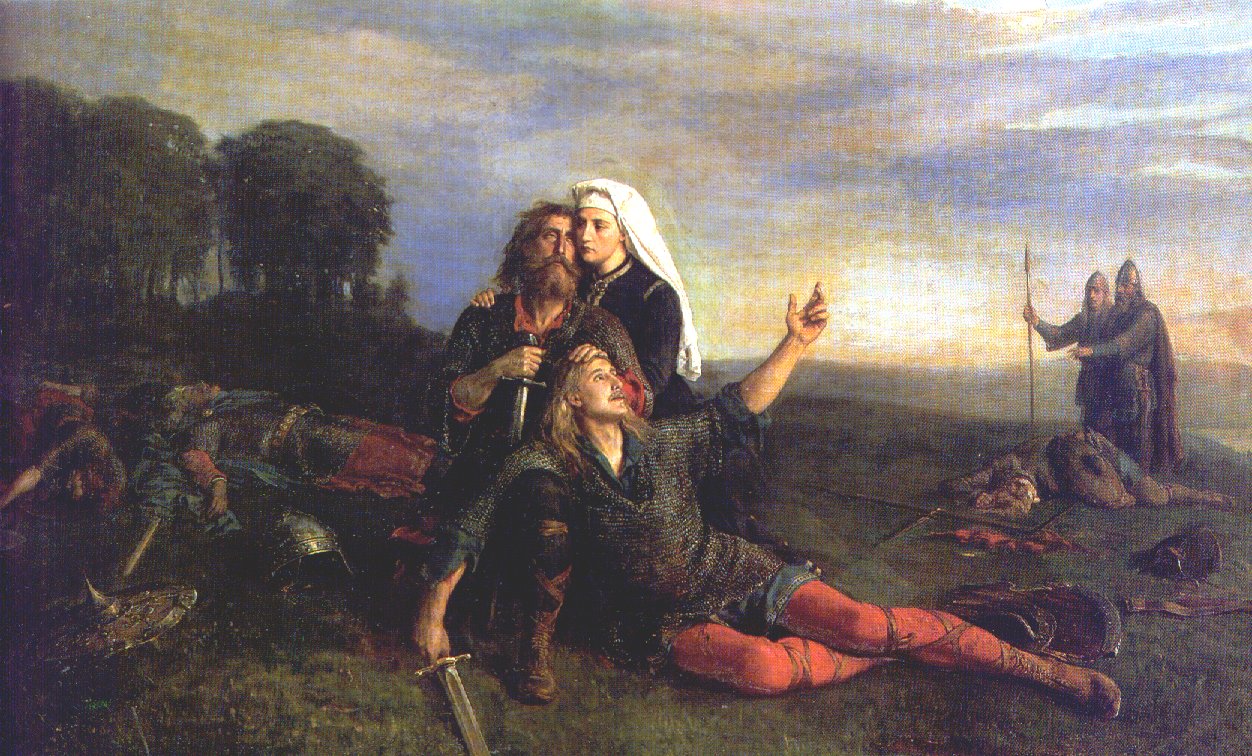|
Augvald
Augvald (Old Norse: ''Ogvaldr'') was a semi-legendary Norwegian petty king portrayed in the legendary Norse sagas. If considered historical, reconstructed estimates based on saga information would have Augvald living some time in the 7th century AD. His kingdom was said to have been based in Jøsursheid, somewhere in the interior of south-western Norway. After a number of naval battles he succeeded in conquering the islands off the western coast of Rogaland. He subsequently moved his kingdom's seat to the north-east of Karmøy, the largest of those islands and adjacent to the strategically important Karmsund strait, to a site later given the name Avaldsnes, after the king. Augvald's kingdom further expanded to incorporate parts of what is today south-western Hordaland. Augvald had several daughters, including two who notably fought alongside him as so-called shield-maidens, or female warriors. He owned and worshipped a sacred cow, which he always kept with him, believing he owed hi ... [...More Info...] [...Related Items...] OR: [Wikipedia] [Google] [Baidu] |
Augvald Locations
Augvald (Old Norse: ''Ogvaldr'') was a semi-legendary Norwegian petty king portrayed in the legendary Norse sagas. If considered historical, reconstructed estimates based on saga information would have Augvald living some time in the 7th century AD. His kingdom was said to have been based in Jøsursheid, somewhere in the interior of south-western Norway. After a number of naval battles he succeeded in conquering the islands off the western coast of Rogaland. He subsequently moved his kingdom's seat to the north-east of Karmøy, the largest of those islands and adjacent to the strategically important Karmsund strait, to a site later given the name Avaldsnes, after the king. Augvald's kingdom further expanded to incorporate parts of what is today south-western Hordaland. Augvald had several daughters, including two who notably fought alongside him as so-called shield-maidens, or female warriors. He owned and worshipped a sacred cow, which he always kept with him, believing he owed hi ... [...More Info...] [...Related Items...] OR: [Wikipedia] [Google] [Baidu] |
Ferking
King Ferking was a semi-legendary figure recorded in local church literature. He lived in the 7th century, controlling a realm that included western parts of island of Karmøy, in southern Norway. The name Ferking is probably derived from the nickname or title Farthegn, meaning "travelling gentleman" or "travelling merchant". Biography The legend was first recorded by Icelandic historian, Tormod Torfæus in ''Historia rerum Norvegicarum'', about 1700. The legend claims that King Ferking lived at Ferkingstad, where he had built large houses of stones. The banquet halls were so huge that 500-600 men could dance in honor of the gold calf, which Ferking worshiped. To prevent anyone from taking the gold calf, Ferking buried it somewhere in this area. The hiding place is said to have been marked on a map that was destroyed when the vicarage of Falnes burned down in 1842. King Ferking was a ruler of the sea, a Viking who spent most of his time on board a ship, and he brought ho ... [...More Info...] [...Related Items...] OR: [Wikipedia] [Google] [Baidu] |
Karmøy
Karmøy is a municipality in Rogaland county, Norway. It is southwest of the town of Haugesund in the traditional district of Haugaland. The administrative centre of the municipality is the town of Kopervik. Most of the municipality lies on the island of Karmøy. The island is connected to the mainland by the Karmøy Tunnel and the Karmsund Bridge. It is known for its industries, as well as for fishing. Karmøy is also well known in Norway for its beautiful heather moors and the white sand surfing beaches. The municipality is the 294th largest by area out of the 356 municipalities in Norway. Karmøy is the 25th most populous municipality in Norway with a population of 42,541, making it one of the largest in the region. The municipality's population density is and its population has increased by 4.9% over the previous 10-year period. The island itself is the 4th most populated island in all of Norway. General information The municipality of Karmøy is a recent creation. Du ... [...More Info...] [...Related Items...] OR: [Wikipedia] [Google] [Baidu] |
Avaldsnes
Avaldsnes is a village in Karmøy municipality in Rogaland county, Norway. The village is located on the northeastern part of the island of Karmøy, along the Karmsundet strait, just south of the town of Haugesund. The village was an ancient centre of power on the west coast of Norway and is the site of one of Norway’s more important areas of cultural history. The trading port of Notow and the Avaldsnes Church are two notable historic sites in Avaldsnes. The village was the administrative centre of the old municipality of Avaldsnes which existed from 1838 until 1965. The village has a population (2019) of 2,890 and a population density of . Avaldsnes has been described as "Norway's oldest capital" because it was the primary residency of Harald Fairhair who unified Norway into one kingdom. History Avaldsnes is believed to have been named after the legendary King Augvald, who allegedly had his seat in the area surrounding the Karmsundet strait. It was here that there w ... [...More Info...] [...Related Items...] OR: [Wikipedia] [Google] [Baidu] |
Aslak Bolt's Cadastre
''Aslak Bolt's cadastre'' ( no, Aslak Bolts jordebog; written 1432–1433) is a Norwegian cadastre, a detailed register of properties and incomes of the Archdiocese of Nidaros. History Aslak Bolt's cadastre was a register of land ownership with the Archdiocese of Nidaros. The cadastre comprises more than 3000 farms, with information about scope and volume of income. The document is originally written on the instruction of archbishop Aslak Bolt (c. 1380 – 1450), Archbishop of the Diocese of Nidaros. It was probably completed in 1432 and 1433, with later supplements and corrections. The properties of the archdiocese included several thousand farms. The records in the land register are arranged topographically by counties within the diocese. The cadastre is regarded as an important primary historical source, both for historical economic research, and for research of place names. The original document was written on pergament and is now deposited at the National Archives ... [...More Info...] [...Related Items...] OR: [Wikipedia] [Google] [Baidu] |
Thormodus Torfæus
Thormodus Torfæus (Thormodr Torfason, Thormod Torfæus, or Þormóður Torfason) (1636—1719) was an Icelandic historian, born 27 May 1636 at Engey, Iceland and educated at the University of Copenhagen. He lived and worked for most of his life in Kopervik, Karmøy, Norway. In 1667 he was appointed royal antiquary of Iceland, and in 1682 King Christian V of Denmark appointed him Royal Historian of the Kingdom of Denmark-Norway. He translated several Icelandic works into the Danish language and was the author of ''Historia Vinlandiæ Antiquæ'' (1705); ''Grœnlandia Antiqua'' (1706); and ''Historia Rerum Norvegicarum'' (four volumes, 1711). In 1711, Torfæus's Historia rerum Norvegicarum (history of Norway, written in Latin) was published in four folio volumes. It was the first comprehensive presentation of Norwegian history since Snorri Sturluson's Heimskringla. The work covers Norwegian history, from its earliest beginnings until 1387. The focus – and the strength of the work � ... [...More Info...] [...Related Items...] OR: [Wikipedia] [Google] [Baidu] |
Kopervik
Kopervik is the largest town on the island of Karmøy in Rogaland county, Norway. It is also the administrative centre of the municipality of Karmøy. It is part of the traditional district of Haugaland. The town was also an independent municipality from 1866 until 1965. The town has a population (2019) of 11,561 and a population density of . The municipality of Karmøy has about 42,000 inhabitants, so this means Kopervik is home to about 25% of the municipal population. Kopervik is one of three towns in Karmøy (the others are Åkrehamn and Skudeneshavn). Kopervik is a transportation hub for scheduled boats going north to Bergen and south to Stavanger. The main industries are aluminium smelting and fishing. Kopervik contains Karmøy's municipal government buildings as well as a lot of the commercial development in the municipality. Kopervik Church has been located in the town for a long time. The previous church building was destroyed by fire in 2010, and its replacement was c ... [...More Info...] [...Related Items...] OR: [Wikipedia] [Google] [Baidu] |
Legendary Saga
A legendary saga or ''fornaldarsaga'' (literally, "story/history of the ancient era") is a Norse saga that, unlike the Icelanders' sagas, takes place before the settlement of Iceland.The article ''Fornaldarsagor'' in ''Nationalencyklopedin'' (1991) There are some exceptions, such as '' Yngvars saga víðförla'', which takes place in the 11th century. The sagas were probably all written in Iceland, from about the middle of the 13th century to about 1400, although it is possible that some may be of a later date,Einar Ól. Sveinsson, "Fornaldarsögur", in ''Kulturhistorisk leksikon for nordisk middelalder fra vikingtid til reformasjonstid, bd. 4'' (Copenhagen, 1959) such as ''Hrólfs saga kraka''. Description of the sagas In terms of form, ''fornaldarsögur'' are similar to various other saga-genres, but tend towards fairly linear, episodic narratives. Like sagas in other genres, many quote verse, but in the ''fornaldarsögur'' that verse is almost invariably in the metre of Eddaic v ... [...More Info...] [...Related Items...] OR: [Wikipedia] [Google] [Baidu] |
Source Criticism
Source criticism (or information evaluation) is the process of evaluating an information source, i.e.: a document, a person, a speech, a fingerprint, a photo, an observation, or anything used in order to obtain knowledge. In relation to a given purpose, a given information source may be more or less valid, reliable or relevant. Broadly, "source criticism" is the interdisciplinary study of how information sources are evaluated for given tasks. Meaning Problems in translation: The Danish word ''kildekritik'', like the Norwegian word ''kildekritikk'' and the Swedish word ''källkritik'', derived from the German ''Quellenkritik'' and is closely associated with the German historian Leopold von Ranke (1795–1886). Historian Wolfgang Hardtwig wrote: His anke'sfirst work ''Geschichte der romanischen und germanischen Völker von 1494–1514'' (History of the Latin and Teutonic Nations from 1494 to 1514) (1824) was a great success. It already showed some of the basic charact ... [...More Info...] [...Related Items...] OR: [Wikipedia] [Google] [Baidu] |
Old Norse
Old Norse, Old Nordic, or Old Scandinavian, is a stage of development of North Germanic languages, North Germanic dialects before their final divergence into separate Nordic languages. Old Norse was spoken by inhabitants of Scandinavia and their Viking expansion, overseas settlements and chronologically coincides with the Viking Age, the Christianization of Scandinavia and the consolidation of Scandinavian kingdoms from about the 7th to the 15th centuries. The Proto-Norse language developed into Old Norse by the 8th century, and Old Norse began to develop into the modern North Germanic languages in the mid-to-late 14th century, ending the language phase known as Old Norse. These dates, however, are not absolute, since written Old Norse is found well into the 15th century. Old Norse was divided into three dialects: Old West Norse, ''Old West Norse'' or ''Old West Nordic'' (often referred to as ''Old Norse''), Old East Norse, ''Old East Norse'' or ''Old East Nordic'', and ''Ol ... [...More Info...] [...Related Items...] OR: [Wikipedia] [Google] [Baidu] |
Epithet
An epithet (, ), also byname, is a descriptive term (word or phrase) known for accompanying or occurring in place of a name and having entered common usage. It has various shades of meaning when applied to seemingly real or fictitious people, divinities, objects, and binomial nomenclature. It can also be a descriptive title: for example, Pallas Athena, Phoebus Apollo, Alfred the Great, Suleiman the Magnificent, and Władysław I the Elbow-high. Many English monarchs have traditional epithets: some of the best known are Edward the Confessor, William the Conqueror, Richard the Lionheart, Æthelred the Unready, John Lackland and Bloody Mary. The word ''epithet'' can also refer to an abusive, defamatory, or derogatory phrase. This use as a euphemism is criticized by Martin Manser and other proponents of linguistic prescription. H. W. Fowler complained that "epithet is suffering a vulgarization that is giving it an abusive imputation." Linguistics Epithets are sometimes at ... [...More Info...] [...Related Items...] OR: [Wikipedia] [Google] [Baidu] |







